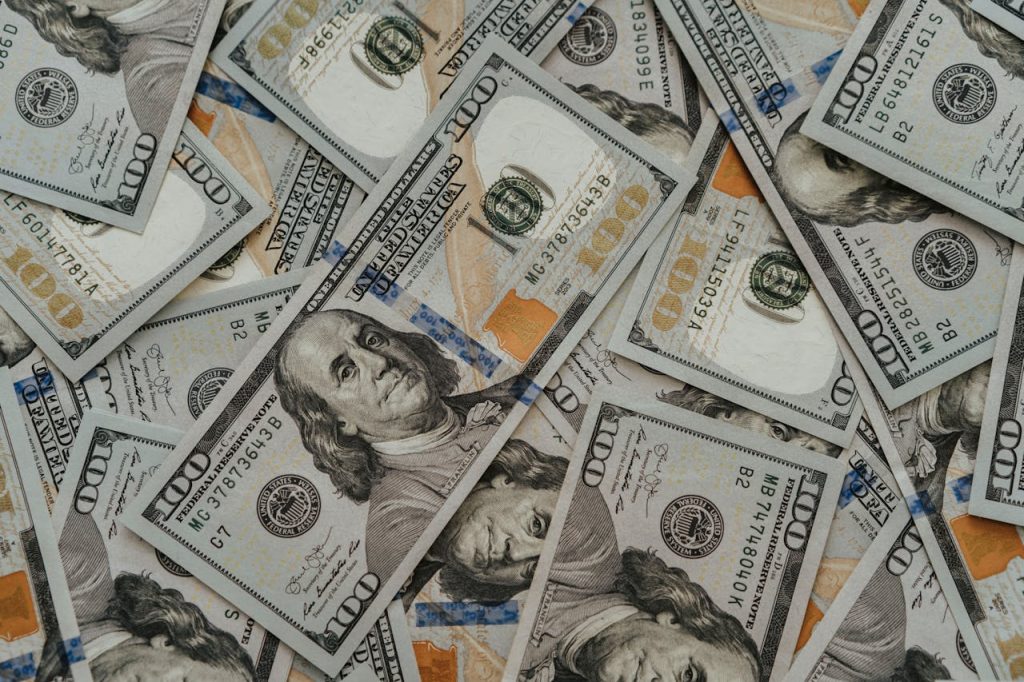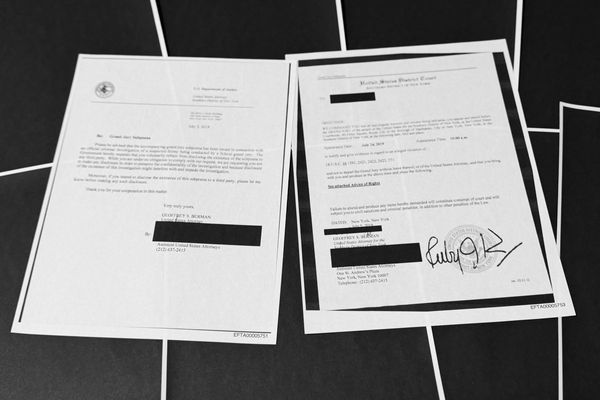
The ultra-wealthy live in a different world where money flows like water, and sometimes that water gets poured down some pretty bizarre drains. While most of us carefully consider every purchase, billionaires and millionaires have been known to drop astronomical sums on things that would make your head spin. These aren’t investments or business ventures – they’re pure vanity projects, whims, and sometimes outright mistakes that cost more than most people will earn in several lifetimes. Understanding these extravagant wastes of money reveals important lessons about wealth psychology, financial priorities, and why having unlimited resources doesn’t always lead to smart spending decisions. These stories of wealthy people spending millions on nothing serve as entertainment and cautionary tales about the dangers of unchecked financial power.
1. A Banana Taped to a Wall for $6.2 Million
Art collector Justin Sun made headlines when he purchased Maurizio Cattelan’s “Comedian” – literally a banana duct-taped to a wall – for $6.2 million at a Sotheby’s auction. The artwork comes with a certificate of authenticity and instructions for replacing the banana when it rots, which happens regularly. Sun later ate the banana at a press conference, calling it “much better than other bananas.” This purchase perfectly illustrates how wealthy people spending millions can defy all logic, turning perishable fruit into a multi-million-dollar statement piece that exists more as a concept than a tangible asset.
The art world has become a Code Playground for the ultra-rich to make statements that ordinary people simply cannot comprehend. When you have billions, spending millions on a banana becomes less about the fruit and more about the exclusivity and conversation it generates.
2. Invisible Sculptures Worth Millions
Italian artist Salvatore Garau sold an “invisible sculpture” called “Io Sono” (I Am) for $18,300, proving that wealthy people spending millions extends even to things that literally don’t exist. The sculpture is described as existing in a “vacuum” and comes with a certificate of authenticity. The buyer received detailed instructions about where the invisible artwork should be displayed and how much space it occupies.
This trend has exploded in the contemporary art market, with collectors paying substantial sums for conceptual pieces that challenge traditional notions of ownership and value. The psychology behind these purchases reveals how the wealthy often buy status and conversation starters rather than tangible objects.
3.$1.3 Million for a Parking Spot
A Hong Kong parking space sold for $1.3 million in 2021, making it one of the world’s most expensive pieces of real estate per square foot. The 135-square-foot spot in the luxury Cullinan West development costs more than most people’s entire homes. This represents wealthy people spending millions on basic necessities that have been inflated to absurd levels due to scarcity and status.
The parking space purchase highlights how extreme wealth inequality can distort markets to the point where basic amenities become luxury items. When billionaires compete for limited resources, prices spiral beyond any reasonable connection to utility or value.
4. A $2.6 Million Pigeon
A racing pigeon named Armando sold for $2.6 million to a Chinese buyer, making it the most expensive pigeon in history. While racing pigeons can be valuable breeding stock, this price tag represents pure speculation and status seeking rather than any realistic return on investment. The bird’s racing career was already over, making this purchase purely about owning something rare and expensive.
Exotic animal collecting has become another avenue for wealthy people to spend millions on items with questionable practical value. These purchases often reflect a desire to own something unique rather than any genuine appreciation for the animal’s capabilities.
5.$450 Million for a Painting That May Be Fake
The “Salvator Mundi,” attributed to Leonardo da Vinci, sold for $450 million despite serious questions about its authenticity and condition. Art experts remain divided about whether da Vinci actually painted it, with some suggesting it’s primarily the work of his workshop. The painting has since disappeared from public view, and its current location is unknown.
This purchase demonstrates how wealthy people spending millions can be driven more by prestige and bragging rights than careful due diligence. The buyer essentially paid half a billion dollars for a painting that might not even be what they thought they were purchasing.
6.$100 Million Yacht That Never Sails
Russian oligarch Roman Abramovich owns multiple superyachts worth hundreds of millions, including some that rarely leave port. These floating palaces require millions in annual maintenance, crew salaries, and docking fees, even when sitting unused. The Eclipse, worth over $500 million, spends most of its time anchored while accumulating massive ongoing costs.
Superyacht ownership represents the ultimate example of wealthy people spending millions on depreciating assets that provide minimal actual utility. These vessels often serve more as status symbols than functional transportation or recreation.
7.$12.6 Million for a Single Baseball Card
A 1952 Mickey Mantle baseball card sold for $12.6 million, setting records for sports memorabilia. While vintage cards can appreciate in value, this price represents pure speculation and nostalgia rather than any intrinsic worth. The card sits in a protective case, generating no income and providing no practical benefit beyond bragging rights.
Sports memorabilia has become another arena where wealthy people spending millions defies rational investment logic. These purchases are driven by emotion and status rather than financial returns.
8.$200 Million Private Island That Floods Regularly
Tech billionaire Larry Ellison purchased the Hawaiian island of Lanai for $300 million, then spent hundreds of millions more on improvements. Despite the massive investment, parts of the island regularly flood, and many development projects have stalled or failed. The island generates minimal revenue compared to the enormous sums invested.
Private island ownership appeals to the ultra-wealthy as the ultimate privacy statement, but these purchases often become money pits that consume millions in ongoing maintenance and development costs without generating proportional returns.
9. Millions for a Meteorite
Wealthy collectors have paid millions for meteorites. While scientifically interesting, these space rocks provide no practical benefit and require expensive storage and insurance. They represent pure collecting obsession rather than any rational investment strategy.
The meteorite market demonstrates how wealthy people spending millions can extend to virtually any rare object, regardless of its practical utility or investment potential.
10.$50 Million Wine Collection That Turned to Vinegar
Some wealthy collectors have invested millions in rare wines that later spoiled due to improper storage or authentication issues. Counterfeit wines have cost collectors tens of millions, with some discovering their prized bottles were worthless fakes only after decades of storage costs.
Wine collecting can be a legitimate investment, but wealthy people spending millions often fall victim to fraud, poor storage, or simple bad luck that turns their liquid assets into expensive vinegar.
11.$30 Million for a Phone Number
In some countries, particularly in Asia, wealthy individuals have paid millions for lucky phone numbers. A Chinese businessman paid $30 million for a phone number containing multiple eights, considered extremely lucky in Chinese culture. The number provides no additional functionality beyond a regular phone number.
These purchases show how wealthy people spending millions can be driven by cultural beliefs and superstitions rather than any practical considerations or investment logic.
12.$100 Million Space Tourism Tickets
Several billionaires have spent enormous sums on brief space tourism flights lasting just minutes. These suborbital trips provide a few minutes of weightlessness and bragging rights but no practical benefit, and the cost per minute of the experience reaches astronomical levels.
Space tourism represents the newest frontier for wealthy people spending millions on experiences that provide minimal lasting value beyond the ability to say they’ve been to space.
When Money Loses All Meaning
These examples reveal a fundamental truth about extreme wealth: money loses its connection to value and utility when you have unlimited resources. Wealthy people spending millions on nothing demonstrates how financial success doesn’t automatically translate to wise spending decisions. These purchases often reflect psychological needs for status, uniqueness, or simply the thrill of being able to afford something outrageous.
The pattern across all these examples shows that wealthy people spending millions frequently prioritize exclusivity and bragging rights over practical value or sound investment principles. Understanding these behaviors can help the rest of us make better financial decisions by focusing on utility, long-term value, and genuine personal satisfaction rather than status or keeping up with others.
What’s the most ridiculous expensive purchase you’ve ever heard about, and what do you think drives people to spend money on things with no practical value?
Read More
The post 12 Times Rich People Spent Millions on Absolutely Nothing appeared first on The Free Financial Advisor.







